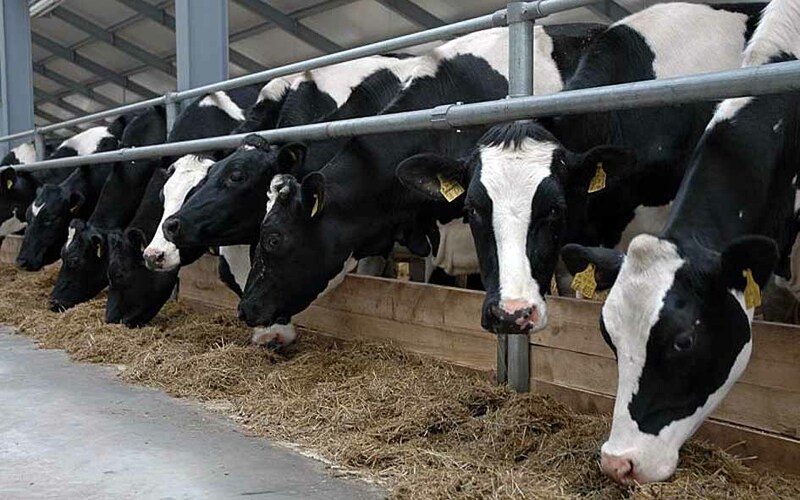In May, as soon as juicy green grass appears, the animals begin to give more milk and become more mobile. The owners have reduced the amount of feeding hassle. Cows go to pasture from morning to evening. It is important to choose the right sites, with the ability to alternate them over time. Grass stands need to be allowed to grow in order to use the area with benefit several times per season.
On a day, a healthy animal can consume from half to a whole centner of green fodder, if its quality allows.
Plant growth periods especially influence the amount of their uptake by cattle. The most “tasty” for him is the grass during budding, since it contains a maximum of useful substances during this period. When flowering, animals begin to chew less actively.
With good grass coverage and milk yield of about 15 liters per day, a cow also needs 1-1.5 kg of concentrated feed per half ton of weight.
Young growth noticeably grows and develops during the grazing period. Heifers improve the functions of the digestive system, and bulls become heavier. It is not necessary for them to mow, they themselves perfectly eat grass from the root. This process gives impetus to the work of the whole organism.
It is advisable to walk young animals in the morning and late in the evening, when the sun is not scorching. The heat does not have the best effect on the life of cattle. Instead of eating, they will try to rest in the shade, and also look for a place to drink, which is strictly prohibited. Otherwise, the risk of helminthic diseases increases significantly.
During the grazing period, cows experience a shortage of mineral feed. They are given additionally, coupled with concentrated additives.
Buying a cow
Cattle are classified according to breed. A cow can be dairy, beef or a combined type - milk and beef.
Representatives of the meat type are less in demand among breeders.
Having chosen a breed depending on the purpose of breeding, the animal is evaluated according to a number of external signs. Dairy cows have a small, light, dry, elongated head. They note a pronounced folding on the skin. The chest of such animals is well developed. The udder is quite deep, voluminous and wide, has the shape of a bowl. The ideal dimensions are as follows: depth is about 30 cm (+/- 1 cm), girth is from 110 to 120 cm. The udder is covered with thin, delicate skin with soft hair. Two veins run through the belly of the cow to the udder under the skin, carrying milk. In a representative of the breed suitable for large milk yields, they are quite well defined. At the site of entry into the depth of the abdominal cavity, the veins form "wells". The older the animal, the more noticeable these signs.
The shape and size of the teats also characterizes whether a cow is able to produce enough milk. Visually normal nipples are equally developed, set at an equal distance from each other. They are not very thin, but not thick either. There should not be any seals or bumps on the udder. Similar phenomena, revealed during the examination, speak of an inflammatory process.
Having felt the cow by the udder, it should certainly be milked. The jets in a healthy animal will be even, milk should come out easily. After milking, the udder is again observed. It falls in volume, while forming skin folds on the back.
Outwardly, it is quite possible to determine the condition of the cow. The animal looks cheerful, it has clear and shiny eyes, walks confidently, does not make extraneous sounds.
With decent care, cattle can live 20-25 years. Although it is unprofitable to keep it longer than 12 years. With age, milk production decreases significantly. Therefore, when buying, a young animal is often chosen.
Age is determined by the number of calvings, which can be checked by the presence of annular intercepts on the horns. The number of interceptions and calving is the same. 2–2.5 years are added to it, and a wide gap on the horns of a cow adds another year, since it is considered a missed period of miscarriage of a calf.
After the sixth calving, the cow begins to give noticeably less milk.

